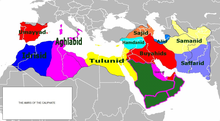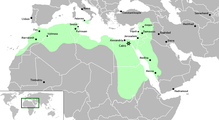Nadene Goldfoot
The taking of Jerusalem by Herod the Great by Jean FouquetKings of Israel
KINGS OF ISRAEL and JUDAH
1. Saul-11th Century BCE, son of Kish of the Tribe of Benjamin, selected by Prophet Samuel because Saul had organized and trained an army and kept winning.
2. David- 1000-960 BCE. son of Jesse of the tribe of Judah, declared himself king of Judah.
3. Solomon-son of David, 961-920 BCE: Death causes Civil War-2 states, Israel (Samaria & Judah.
Kings of Israel BCE Kings of Judah BCE
4. Jeroboam (933-912) 4. Rehoboam (933-917) son of Solomon
5. Nadab (912-911) 5. Abijam (917-915)
6. Baasha (911-888) 6. Asa (915-875)
7. Elah (888-887) 7. Jehoshaphal (875-851)
8. Zimri (887)
9. Omri (887-876)
10.Ahab (876-853)
11. Ahaziah/Uzziah (853 8. Jehoram (851-844)
12. Jehoram-853-843) 9, Ahaziah (844-843)
13. Jehu (843-816 10. Athaliah (843-837)
14. Jehoahaz (816-800) 11. Joash (837-798)
15. Jehoash (800-785) 12. Amaziah (798-780)
16. Jeroboam (785-745) 13. Azariah/Uzziah)780-740)
17. Zechariah (744)
18. Shallum (743)
19. Menahem (743-736) 14. Jotham (740-735)
20. Pekahiah (736-735) 15. Ahaz (735-720)
21. Pekah (735-730)
22. Hoshea (730-721) 16. Hezekiah (720-692)
17. Manasseh (692-638)
Assyrian Attack, 18. Amon (638-637)
19.Josiah (637-608)
20. Jehoahaz (608)
21. Jehoiakim (608-598)
22. Jehoiachin (598-597)
23. Mattaniah/ Zedekiah (597-586)
Babylonians attack and take prisoners of Judah in 597 and 586 BCE.Babylonian destruction of Jerusalem and the deportation of most of the Jews to Babylon.
Scholars refer to the state as the Hasmonean Kingdom to distinguish it from the previous kingdoms of Israel. The name "Judaea" has also been used to describe the Hasmonean Kingdom although this name reflects the later designation of the region under the Romans at the time of Josephus' writings in the late 1st century.
Maccabees (rebel leaders)
- Mattathias, 170–167 BCE
- Judas Maccabeus, 167–160 BCE
- Jonathan Apphus, 160–143 BCE (High Priest after 152 BCE)
Monarchs (Ethnarchs and Kings) and High Priests
- Simon Thassi, 142–135 BCE (Ethnarch and High Priest)
- John Hyrcanus I, 134–104 BCE (Ethnarch and High Priest)
- Aristobulus I, 104–103 BCE (King and High Priest)
- Alexander Jannaeus, 103–76 BCE (King and High Priest)
- Salome Alexandra, 76–67 BCE (only Queen)
- Hyrcanus II, 67–66 BCE (King from 67 BCE; High Priest from 76 BCE)
- Aristobulus II, 66–63 BCE (King and High Priest)
- Hyrcanus II (restored), 63–40 BCE (High Priest from 63 BCE; Ethnarch from 47 BCE)
- Antigonus, 40–37 BCE (King and High Priest)
- Aristobulus III, 36 BCE (only High Priest)
- 11. Antipater the Idumaean (Procurator of Judaea) 47–44 BCE
- 12.. Herod I the Great
- Governor of Galilee 47–44 BCE
- Tetrarch of Galilee 44–40 BCE
- Elected king of all Judaea by the Roman Senate 40 BCE, reigned
- Herod I the Great, 37 BCE-4BCE, king, son of Antipater the Idumean
- 12. Herod Archelaus: Ruler of Judea from 4 BCE to 6 CE, son of Herod, Ethnarch by emperor Augustus.
- 13. Phasael (Governor of Jerusalem) 47–40 BCE
- 14. Herod Antipas (Tetrarch of Galilee) 4 BCE – 39 CE
- 15.Philip the Tetrarch (Tetrarch of Batanaea) 4 BCE – 34 CE, son of Herod
- 16.Salome I (Tetrach of Jabneh) 4 BCE – 10 CE, wife of Philip
- 17. Herod Agrippa,King of all Judaea 41–44 CE, previously Judaea (Roman province), gifted to him by Claudius, and reinstated as a province after his death. He was the last ruler with the royal title reigning over Judea and the father of Herod Agrippa II, the last king from the Herodian dynasty.
- 18. Herod Agrippa II, King, [b. AD 27/28?-d. 93?] became the 8th and final ruler from the Herodian family, but without any control of Judea. He supported Roman Rule and died childless
- Great Sanhedrin 80–429 CE
The Patriarchate was the governing legalistic body of Judean and Galilean Jewry after the destruction of the Second Temple until about 429 CE. Being a member of the house of Hillel and thus a descendant of King David, the Patriarch, known in Hebrew as the Nasi (prince), had almost royal authority.
- Gamaliel II of Jamnia (80–115)
- Eleazar ben Azariah (115–120)
- Interregnum (Bar Kokhba revolt) (132–135) held Jerusalem
- Judah bar Ilai c. 140 moved the Sanhedrin to Usha
- Shimon ben Gamliel II
- Judah haNasi (170–220) – ruled from Bet Shearim, then Sepphoris
- Gamaliel III (220–230)
- Judah II (230–270) – ruled from Sepphoris, then Tiberias. This was the Sanhedrin's last move.
- Gamaliel IV (270–290)
- Judah III (290–320)
- Hillel II (320–365) – 320 is given as the traditional date for the codification of the Jerusalem Talmud
- Gamaliel V (365–385)
- Judah IV (385–400) – in 395, the Roman Empire split into east and west and Palestine passed under the eastern Byzantine Empire.
- Gamaliel VI (400–425) – on 17 October 415, an edict issued by the Emperors Honorius and Theodosius II deposed Gamaliel VI as nasi. Theodosius did not allow the appointment of a successor and in 429 terminated the Jewish patriarchate.
- 451: The Council of Chalcedon confirms Jerusalem's status as a Patriarchate as one of the Pentarchy.
- Juvenal of Jerusalem becomes the first Patriarch of Jerusalem.
- 540–550: Emperor Justinian I undertakes a number of building works, including the once magnificent Nea Ekklesia of the Theotokos ("the Nea") and the extension of the Cardo thoroughfare.
- 610: Jewish revolt against Heraclius begins in Antioch and spreads to other cities including Jerusalem.
- 614: Siege of Jerusalem (614) – Jerusalem falls to Khosrau II's Sassanid Empire led by General Shahrbaraz, during the Byzantine–Sassanid War of 602–628.
- Jewish leader Nehemiah ben Hushiel allied with Shahrbaraz in the battle, as part of the Jewish revolt against Heraclius, and was made governor of the city.
- 617: Jewish governor Nehemiah ben Hushiel is killed by a mob of Christian citizens, three years after he is appointed. The Sassanids quell the uprising and appoint a Christian governor to replace him.
- 629: Byzantine emperor Heraclius retakes Jerusalem, after the decisive defeat of the Sassanid Empire at the Battle of Nineveh (627). Heraclius personally returns the True Cross to the city.
- (637) Arabian Caliph Umar the Great conquers Jerusalem and at the request of Jerusalem's Christian Patriarch, ttle of Yarmouk a few months earlier.
- Patriarch Sophronius and Umar are reported to have agreed the Covenant of Umar I, Jerusalem becomes part of the Jund Filastin province of the Arab Caliphate.
- 661: Muawiyah I is ordained as Caliph of the Islamic world in Jerusalem following the assassination of Ali in Kufa, ending the First Fitna and marking the beginning of the Umayyad Empire.
- 705: The Umayyad Caliph Al-Walid I builds the Masjid al-Aqsa.
- 744–750: Riots in Jerusalem and other major Syrian cities during the reign of Marwan II, quelled in 745–46. The Umayyad army is subsequently defeated in 750 at the Battle of the Zab by the Abbasids, who take control of the entire empire including Jerusalem.
- 799: Charlemagne sent another mission to Patriarch George of Jerusalem.
- 878: Ahmad ibn Tulun, ruler of Egypt and founder of the Tulunid dynasty, conquers Jerusalem and most of Syria,
- 881: Patriarch Elias III of Jerusalem
- 904: The Abbasids regain control of Jerusalem after invading Syria,
- 939/944: Muhammad ibn Tughj al-Ikhshid, governor of Abbasid Egypt and Palestine, is given the title al-Ikhshid by Abbasid Caliph Ar-Radi, and in 944 is named hereditary governor of his lands.
- Fatimid and Seljuk rule
- 969: The Ismaili Shia Fatimids under General Jawhar al-Siqilli conquer the Ikhshidid domains of the Abbasid empire including Jerusalem,
- 975: Byzantine Emperor John I Tzimiskes's second Syrian campaign takes Emesa, Baalbek, Damascus, Tiberias, Nazareth, Caesarea, Sidon, Beirut, Byblos and Tripoli,
- 1009: Fatimid Caliph Al-Hakim orders destruction of churches and synagogues in the empire, including the Church of the Holy Sepulchre.
- 1021: Caliph Ali az-Zahir undertakes extensive renovations to the Dome of the Rock.
- 1023–1041: Anushtakin al-Dizbari is the governor of Palestine and Syria
- 1030: Caliph Ali az-Zahir authorizes the rebuilding of the Church of the Holy Sepulchre and other Christian churches
- 1073: Jerusalem is captured by under Turcoman Emir Atsiz ibn Uwaq,
- 1077: Jerusalem revolts against the rule of Atsiz while he is fighting the Fatimid Empire in Egypt. On his return to Jerusalem, Atsiz retakes the city and massacres the local population. Not long after, Atsiz is executed by Tutush I, governor of Syria under his brother, Seljuk leader Malik-Shah I. Tutush I appoints Artuq bin Ekseb, later founder of the Artuqid dynasty, as governor.
- 1091–1095: Artuq bin Ekseb dies in 1091, and is succeeded as governor by his sons Ilghazi and Sokmen. Malik Shah dies in 1092, and the Seljuk Empire splits into smaller warring states.
- Control of Jerusalem is disputed between Duqaq and Radwan after the death of their father Tutush I in 1095.
- 1098: Fatimid regent Al-Afdal Shahanshah reconquers Jerusalem from Artuq bin Ekseb's sons Ilghazi and Sokmen.
- 1099: Siege of Jerusalem (1099) – First Crusaders capture Jerusalem and slaughter most of the city's Muslim and Jewish inhabitants.
- 1100: Dagobert of Pisa becomes Latin Patriarch of Jerusalem.
- Baldwin I was proclaimed the first King of Jerusalem after politically outmanoeuvering Dagobert.
- 1112: Arnulf of Chocques becomes Latin Patriarch of Jerusalem for the second time
- 1131: Melisende became Queen of Jerusalem, later acting as regent for her son between 1153 and 1161 while he was on campaign. She was the eldest daughter of King Baldwin II of Jerusalem, and the Armenian princess Morphia of Melitene. Crusader Kingdom[edit]
The Crusader defeat at the Battle of Hattin leads to the end of the First Crusader Kingdom (1099–1187).
During the Second Crusader Kingdom (1192–1291), the Crusaders can only gain a foothold in Jerusalem on a limited scale, twice through treaties (access rights in 1192 after the Treaty of Jaffa; partial control 1229–39 after the Treaty of Jaffa and Tell Ajul), and again for a last time between 1241 and 1244.[57]
- 1187: Siege of Jerusalem (1187) – Saladin captures Jerusalem from the Crusaders, after Battle of the Horns of Hattin.
- 1229–1244: From 1229 to 1244, Jerusalem peacefully reverted to Christian control as a result of a 1229 Treaty agreed between the crusading Holy Roman Emperor Frederick II and al-Kamil, the Ayyubid Sultan of Egypt, that ended the Sixth Crusade.The Ayyubids retained control of the Muslim holy places,
- 1239: An-Nasir Dawud, Ayyubid Emir of Kerak, briefly occupies the city and destroys its fortifications before withdrawing to Kerak.
- 1240–1244: An-Nasir Dawud competes with his cousin As-Salih Ayyub, who had allied with the Crusaders, for control of the region.
- 1246: The Ayyubids regain control of the city after the Khwarezmians are defeated by Al-Mansur Ibrahim at Lake Homs.
- The Ayyubids relocate to Damascus, where they continue to control the rump of their empire including Jerusalem for a further ten years.
- 1260: The Army of the Mongol Empire reaches Palestine for the first time:
- Mamluk period
- 1318–1320: Regional governor Sanjar al-Jawli undertook renovations of the city, including building the Jawliyya Madrasa.
- 1328: Tankiz, the Governor of Damascus, undertook further renovations including of the al-Aqsa Mosque and building the Tankiziyya Madrasa.
- 1340: The Armenian Patriarchate of Jerusalem builds a wall around the Armenian Quarter.
1517: Palestine became part of the Ottoman Empire
Resource:
The New Standard Jewish Encyclopedia
https://en.wikipedia.org/wiki/Kingdom_of_Israel_(Samaria)
https://en.wikipedia.org/wiki/Hasmonean_dynasty
https://www.britannica.com/biography/Herod-king-of-Judaea
https://en.wikipedia.org/wiki/Timeline_of_Jerusalem
https://www.britannica.com/biography/Zedekiah
https://en.wikipedia.org/wiki/Kings_of_Judah
https://en.wikipedia.org/wiki/Herod_Agrippa
https://en.wikipedia.org/wiki/List_of_biblical_figures_identified_in_extra-biblical_sources
https://www.wikiwand.com/en/List_of_High_Priests_of_Israel










No comments:
Post a Comment